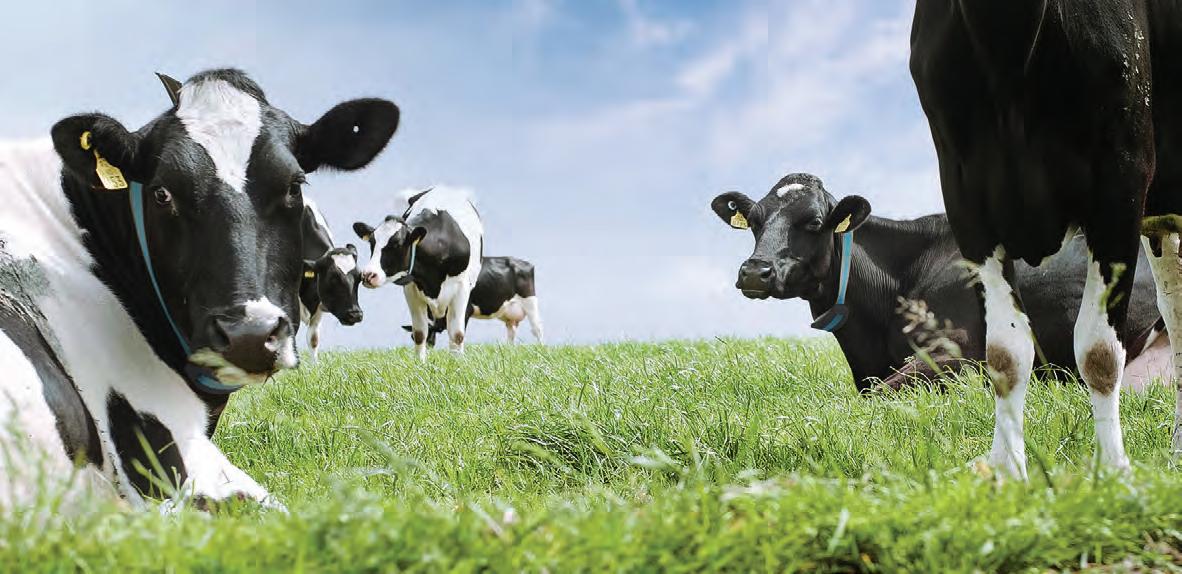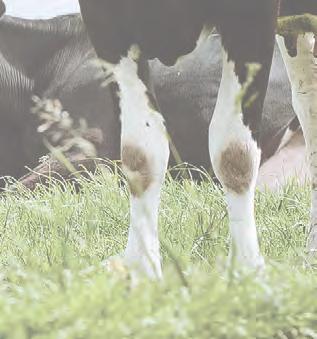
6 minute read
Kairoma Farm Canterbury
by Sun Media
Steve Edwards




A devastating earthquake brought forward planned development in a North Canterbury dairy shed.
Mark Fleming, who farms at Culverden with his wife Penny, says the Kaikoura Earthquake of 2016, basically “stuffed” the base of the milking platform in the 50-bail rotary.
The couple milk just over 1000 cows on the 400ha property, which has been built up by Mark’s family over the years since his grandfather fi rst settled on Rotherham South Road in 1918.
Mark says the milking shed was built in 1997 and the earthquake “just about fi nished it off”.
While the buildings remained sound, he says everything underneath the platform needed replacing.
The platform, which was pushed sideways in the quake but remained in good shape, was jacked up by contractors so damaged material and equipment could be removed and replaced.
Mark says this included a new electrical milk gland in the centre of the pit, plus a new receiving can and milk pump. Foundation replaced
The concrete foundation on which the running gear for the platform sits was replaced, as were the rollers, pedestals, I-beam, wearstrip and drive units under the platform.
Mark says milk lines were also replaced, while some cracks in the yard were patched up.
The shed was “functioning” after the earthquake, but he says the stands wobbled and the platform would move.
“Then we’d have to get the platform to move back over again,” says Mark. “We had a real rough end to the season after that happened. It was a real disruptive milking for the rest of the season.”
Existing Waikato cup removers and SmartSpray in-bail teat-spray system were retained.
Mark says the existing Protrack animal identifi cation system was also retained.
An in-bail feeding system, running barley at present, was installed in 2001.
The shed buildings remained solid through the quake, says Mark, with nothing new added to the plant-room.
Machinery and equipment used in the Culverden project was supplied by Waikato Milking Systems and installed by Morrison Agri. Shed e ciency
Canterbury-based Morrison Agri customer services manager, Rob Morris, says even prior to the quake Mark wanted effi ciency for the shed, so they introduced cup removers and an automatic teatspray system.
The quake saw the under carriage, and foundations on which they sit, of the rotary platform damaged beyond repair, he says.
Rob says foundations and all associated concrete plinth work were removed and a new base built.
“It was all cracked or broken,” he says. “It was very unstable.”
While the concrete platform and bail work remained the same ‘up top’, Rob says all running gear and rollers were replaced.
A new centre gland was also added.
Rob says the old gland was tired.
“It made sense to replace it when the other work under the platform was being done.”
Two milk pumps were replaced by a single, larger version.







Google map aerial shot of milking shed.


With a variable-speed drive, Rob says the latter provides better cooling effi ciency.
Rob says the wash system was upgraded also. This means the wash system will automatically change valves in the centre between milk and wash mode and will also drain the centre of the plant when switched to off.
Milk quality
The milk line joins under the platform were upgraded from plastic to stainless steel for milk quality purposes.
Rob says milk cans and sanitary traps, also under the platform, were upsized/upgraded to cater for the increased herd size and milk fl ow.
Because of its age, he says the Fleming shed platform was getting close to its renewal date.
This was the largest quake-related dairy shed project tackled by Morrison Agri.
Rob says they worked on fi ve to six, including one where an 80-bail rotary platform was knocked off its rollers.
A team of fi ve work on the Fleming property, with one person handling milking duties.
Mark and Penny took over running the property in 2001.
They milk a 70 per cent Friesian herd, with a cross-breed balance.
The fi rst milking in the revamped shed was completed in July 2018.
Mark says the operation, expanded by an additional 100ha in 2007, also includes a neighbouring 230ha run-off.
Both farms produce silage for winter feeding and Mark also buys in a bit of hay.
Quake damage
The Kaikoura Earthquake lasted about two minutes and had a magnitude of 7.8.
The epicentre was just 15km north-east of Culverden.
Detailed studies confi rmed ruptures on 25 faults, considered a world record for the greatest number of faults to rupture in a single earthquake event.
The northern tip of the South Island moved more than two metres towards the North Island and rose almost one metre.
Two people died in the earthquake.
Mark was in bed when the quake struck, just after 11pm, and says his brick house was rocking.
However, the dwelling remained relatively unscathed, except for some paint cracking and a steel shelf in the garage falling on his car.
Chimneys came off a couple of houses on his property, says Mark.
While the quake lasted about two minutes, it felt like fi ve, he says.
Immediately after the event Mark went to the cowshed but didn’t see any obvious damage.
However, he says after a few weeks went by the platform started giving him ‘a bit of grief’.
No other buildings on the property were damaged or stock harmed.
Electricity in the area was knocked out overnight, with Mark not able to milk again until 4pm the following afternoon.
The Culverden region is no stranger to the whims of Mother Nature.
Mark says the property ran sheep and cropping for more than 60 years, before irrigation schemes changed the face of the Amuri Basin in the late 1970s and through the 1980s.
Water is taken from the Waiau and Hurunui rivers for more than 20,000ha of farmland.
Mark says the basin suffers high summer temperatures and long, regular droughts from November to March.
After initially adding more sheep and a couple of hundred beef cattle in the early 1990s, he decided to give cows a go.








Proud to support Kairoma Farm

The e preferred milking g sy ystems s partner r for r Dairy y Farmers Ph 0800 0 577 7 583 3 | | www.morrisonagri.co.nz










